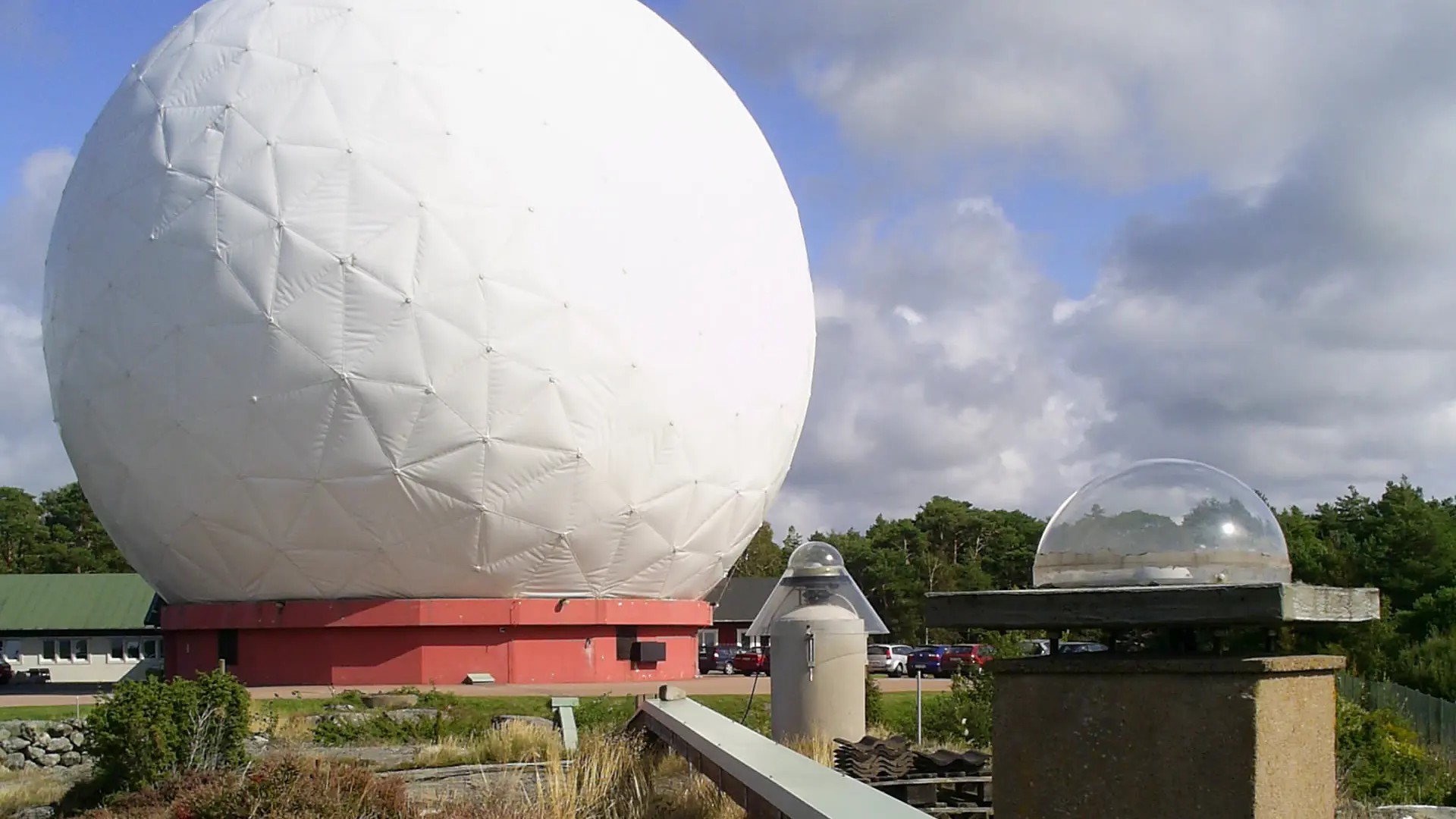
Onsala Space Observatory is an internationally established geodetic fundamental station. We measure and study many global geodynamic phenomena, that is, we study how the Earth changes.
Space geodesy and geodynamics
Onsala Space Observatory is an internationally established geodetic fundamental station. We measure and study many global geodynamic phenomena, that is, we study how the Earth changes. That means that we do research on Earth rotation, reference systems, plate tectonics, land uplift, gravity changes, Earth and oceanic tides, earthquakes, and water vapour in the atmosphere. For the observations we use radio telescopes (the Very Long Baseline Interferometry, VLBI, technique), global navigation satellite systems (GNSS), remote sensing satellites, gravimeters, microwave radiometers, and tide gauges. There is also a seismometer, belonging to the Swedish National Seismic Network operated by Uppsala University, located at the observatory.
For computing facilities, see the National Facility Computing Infrastructure (NaFCI).
Contact person for Earth science activities
Rüdiger Haas
Email: rudiger.haas@chalmers.se, Phone: +46 31-772 5530 (see also contact persons for the different instruments)
See also the web site of the Space Geodesy and Geodynamics unit at the Department of Space, Earth and Environment, Onsala Space Observatory Division pages.
Some of the facilities for Earth sciences are described below.
Geodetic VLBI
Very accurate geodetic measaruments can be made with the radio astronomical technique called Very Long Baseline lnterferometry (VLBI). Several radio telescopes, often in different countries or even on different continents, simultaneously observe the same celestial objects and the data from all telescopes are sent to a central processor. The technique can be used to, e.g., measure distances between continents or very accurately or determine Earth's rotation rate.
At Onsala Space Observatory, geodetic VLBI observations are made with the 20 m telescope and with the Onsala twin telescopes (OTT). The OTT consists of two large parabolic antennae, each 13.2 metres in diameter. The OTT was inaugurated 2017 and is fully operational since January 2020.
OSO is an important partner in the international VLBI cooperation that is coordinated by the IVS (International VLBI Service for Geodesy and Astrometry). The IVS is a service for both IAG (International Association of Geodesy) and IAU (International Astronomical Union) and is crucial for the creation and maintenance of the International Terrestrial Reference Frame (ITRF), the International Celestial Reference Frame (ICRF), as well as observations of Earth Orientation Parameters (EOPs). OSO has the longest observational history of all active IVS sites.
During the last years the next generation VLBI system for geodesy and astrometry has been developed in an international cooperation. It is called VGOS (VLBI Global Observing System) and is an important contribution to IAG’s flaggship GGOS (Global Geodetic Observing System). The Onsala Twin Telescopes (OTT) are the first operationally active VGOS twin telescopes in the IVS network.
GNSS
Signals from global navigation satellite systems (GNSS, e.g., the American GPS and the European Galileo system) can be used to tackle a large variety of scientific questions. Onsala Space Observatory houses several GNSS receivers used for different purposes: accurate positioning, atmospheric remote sensing, and measurements of the sea level. The GNSS stations at OSO contribute to SWEPOS, the GNSS network of Lantmäteriet.
Gravimeter
A permanently operating superconducting gravimeter is in operation at Onsala Space Observatory since June 2009. The main purpose of the facility is to be seen in conjunction with projects that determine gravity change in Fennoscandia, e.g. the Nordic Geodetic Commission's Working Group for Geodynamics. A dominating effect of gravity change in the form of a secular trend is for instance related to the post-glacial isostatic adjustment, an after-effect of the latest great ice sheet in the Pleistocene and its disappearance about 10,000 years ago.
The superconducting gravimeter can monitor temporal changes of gravity and thus provide visiting teams operating absolute gravimeters (free-falling prisms) with measurements of perturbations. These perturbations relate most often to the changing ground water masses near the observing point. But also the attraction and loading effects of the - coupled - system atmosphere and ocean are fairly complicated at the near-by coast of Kattegat.
For more information: see the web site of the superconducting gravimeter.
Microwave radiometry
Microwave radiometry uses radiation from molecules and water droplets in Earth's atmosphere to determine the content of the atmosphere. A radiometer on the ground recieves microwave radiation from, e.g., water vapour, carbon monoxide and ozone in the atmosphere. The data can be used to, e.g., track atmospheric changes. The technique is similar to the one radio astronomers use to study cosmic gas clouds.
Of particular interest is water vapour, a green house gas whose variations are of great importance for climate research. Microwave radiometers at Onsala Space Observatory measure water vapour and water droplets in the lower atmosphere, the troposphere.
There is also an aeronomy station at the observatory with two radiometers measuring gases in the upper atmosphere: water vapour in the stratosphere and mesosphere at 22 GHz, and ozone at 111 GHz and carbon monoxide at 115 GHz, both in the mesosphere.
Seismometer
A seismometer belonging to Det svenska nationella seismiska nätet (SNSN) is located at Onsala Space Observatory. For more information, see the web site of SNSN at Uppsala University.
Tide gauges
Global warming is affecting the sea level by, for example, melting of large masses of ice in polar and subpolar regions, and thermal expansion of seawater. Monitoring and understanding the local response to a global sea level rise is crucial to the safety of the population in coastal and low-lying regions.
A tide gauge measures variations in the sea level. There are different methods to do this. Traditional tide gauges measure the sea level relative to the Earth's crust. The Earth's crust is, however, continuously moving and in order to fully understand sea level change processes, measurements of sea level in relation to the Earth's centre of gravity are necessary. There are two tide gauges at Onsala Space Observatory to achieve this, both connected with millimeter precision to the geodetic instruments at the observatory.
The super tide gauge, inaugurated in 2015, was built in cooperation with the Swedish Meteorological and Hydrological lnstitute, SMHI. It is part of SMHl:s national network, and must have a high reliability. Therefore, it is equipped with several sensors, among them radar, laser and pressure sensors, in order to guarantee reliable and robust observations and time series. The sea level is measured relative to the Earth's crust.
It is also important to measure sea level relative to the Earth's centre of gravity. One way to do this is by using GNSS (global navigation satellite systems) receivers. Different techniques exist. In Onsala, an experimental GNSS tide gauge using two GNSS receivers and two antennas has been installed close to the sea. One of the antennas is up-looking for direct signals, and one is down-looking for signals reflected from the sea surface. The receivers track the phase of the GNSS signal, and the sea leve I can be derived using traditional geodetic phase data analysis.
Time and frequency
Onsala Space Observatory hosts two hydrogen maser clocks and one cesium clock, and contributes to establishing the official Swedish time and international time. Radio astronomical observations, in particular VLBI observations, also depend on these very accurate clocks.
The observatory's time keeping activities are a cooperation with National Laboratory for Time and frequency at RISE Research Institutes of Sweden through our adjunct professor Jan Johansson.
Contact persons:
Jan Johansson
Email: jan.johansson@chalmers.se, Phone: +46 31-772 5558
Rüdiger Haas
Email: rudiger.haas@chalmers.se, Phone: +46 31-772 5530
- Områdesledare, Space, Earth and Environment
